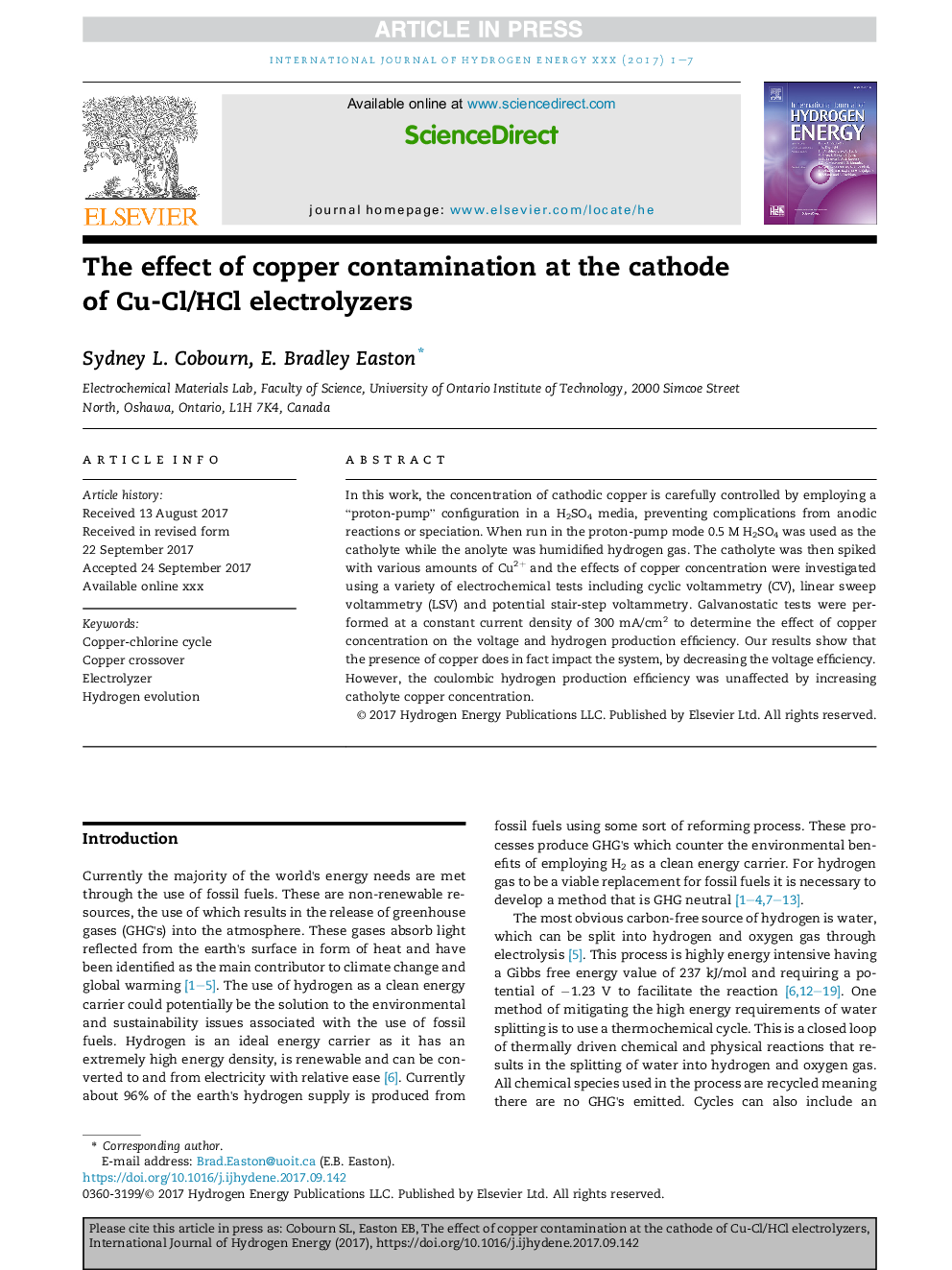| Article ID | Journal | Published Year | Pages | File Type |
|---|---|---|---|---|
| 7709325 | International Journal of Hydrogen Energy | 2017 | 7 Pages |
Abstract
In this work, the concentration of cathodic copper is carefully controlled by employing a “proton-pump” configuration in a H2SO4 media, preventing complications from anodic reactions or speciation. When run in the proton-pump mode 0.5Â M H2SO4 was used as the catholyte while the anolyte was humidified hydrogen gas. The catholyte was then spiked with various amounts of Cu2+ and the effects of copper concentration were investigated using a variety of electrochemical tests including cyclic voltammetry (CV), linear sweep voltammetry (LSV) and potential stair-step voltammetry. Galvanostatic tests were performed at a constant current density of 300Â mA/cm2 to determine the effect of copper concentration on the voltage and hydrogen production efficiency. Our results show that the presence of copper does in fact impact the system, by decreasing the voltage efficiency. However, the coulombic hydrogen production efficiency was unaffected by increasing catholyte copper concentration.
Related Topics
Physical Sciences and Engineering
Chemistry
Electrochemistry
Authors
Sydney L. Cobourn, E. Bradley Easton,
